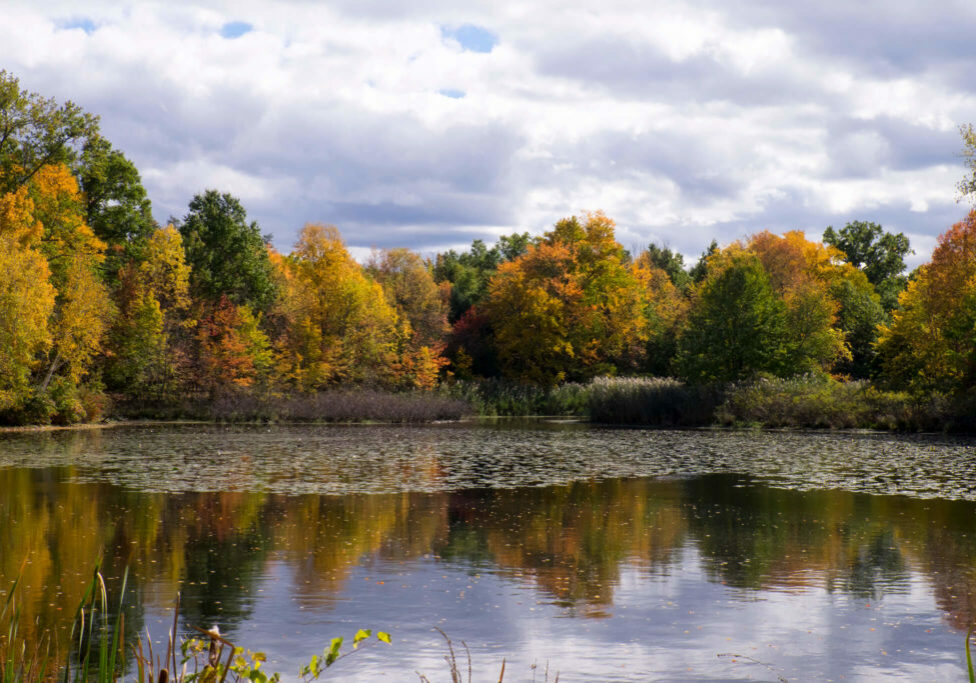Cedar Hill Cemetery is undertaking the restoration of Llyn Mawr, the picturesque pond located along the entryway drive.
One of the most impressive features of Cedar Hill’s landscape is the ornamental foreground. This 65-acre parcel effectively secludes the burial sections of the cemetery from the roadway. Within the foreground, on the left of the entryway drive, is Llyn Mawr, meaning “Great Lake.”
Northeast Aquatic Research performed an evaluation of the pond in August 2020. Their study revealed Llyn Mawr is highly eutrophic. As such it has an excess of nutrients and therefore high biological activity (i.e. plant growth).
Through a cycle of aquatic plants dying and decomposing, eutrophication is a natural process that occurs gradually over many decades. Left untended, a pond may fill in until it transitions to a bog, and eventually dry land. Decomposing aquatic plants also release high levels of carbon dioxide, depleting dissolved oxygen necessary to support biodiversity within the pond.
The water lilies in Llyn Mawr, while beautiful, have overtaken the pond to an extent that nothing else is able to survive in the water. Restoring the natural ecology of the pond will create a habitat attractive to wading birds, wood ducks, frogs, turtles, small fish, and more; all of which at one time inhabited Llyn Mawr.
The restoration of Llyn Mawr involves a multi-faceted approach. It includes reducing excess nutrients through a slurry application to bind available phosphorous; and selective application of herbicides to control water lilies, phragmites, and cattails. Dissolved oxygen levels will be restored via mechanical aeration provided by a nanobubble system.
Noticeable results are anticipated within two to three years.
With the restoration of Llyn Mawr, the ornamental foreground will continue to provide a restful entrance into the cemetery as intended by Cedar Hill’s designer, Jacob Weidenmann.

